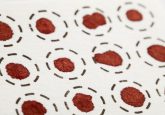New insights on critical reagent optimization for antidrug antibody assays

Critical reagents (CRs) are pivotal components of ligand binding assays [1,2]. They include, but are not limited to, peptides, recombinant proteins and capture/detection antibodies [2]. CRs can be conjugated with other molecules to allow purification or detection for a biochemical assay. Electrochemiluminescence (ECL)-based assays have become attractive due to their elevated sensitivity, dynamic range and simplicity [3]. A common approach for detection of antidrug antibodies (ADAs) relies on ECL chemistry. In a common bridging assay format, biotinylated antibodies bind to a streptavidin-coated plate and are used to capture the ADAs present in a biological matrix. Subsequently, a sulfo-tagged-antibody is used...




